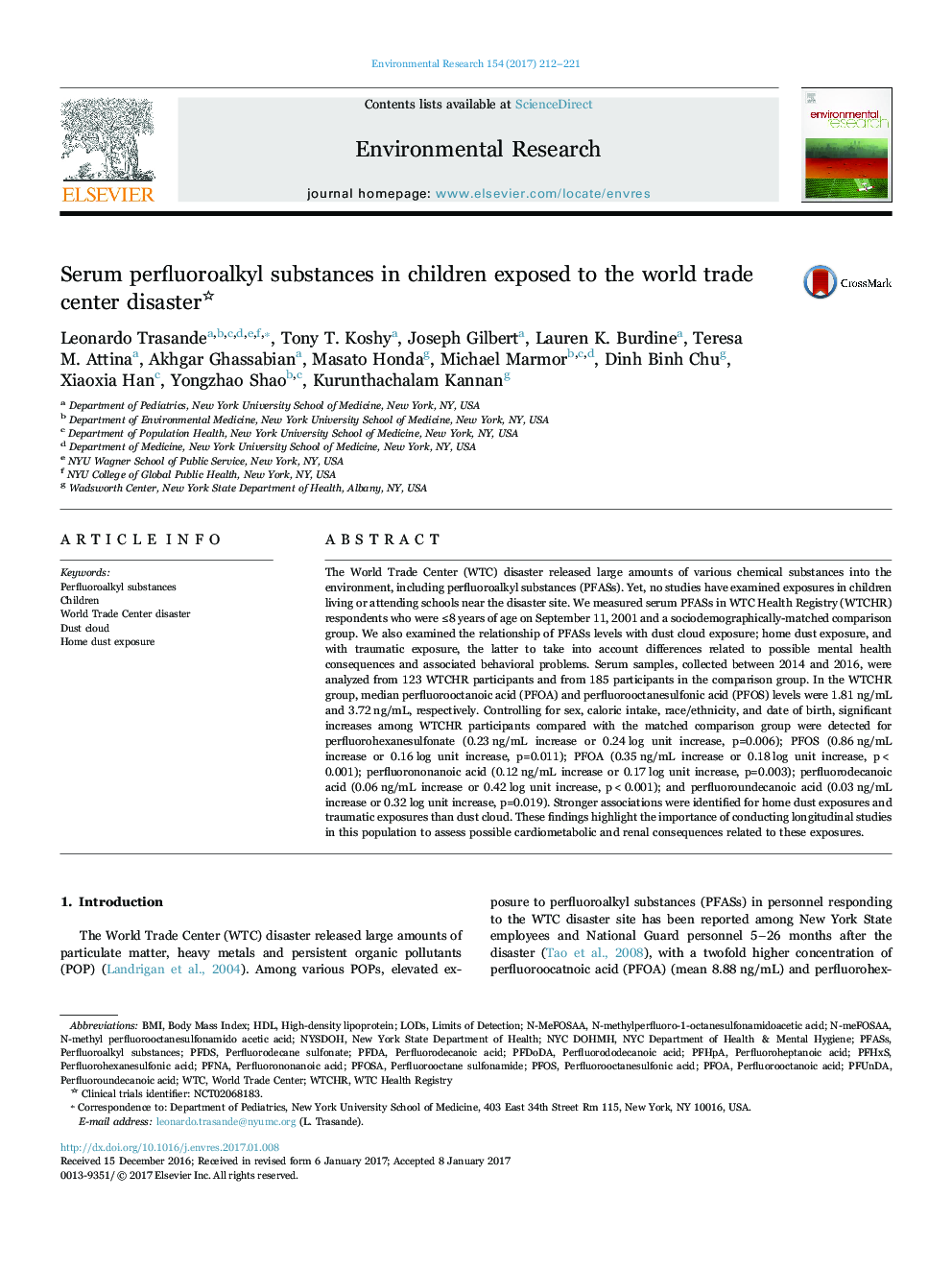| Article ID | Journal | Published Year | Pages | File Type |
|---|---|---|---|---|
| 5756408 | Environmental Research | 2017 | 10 Pages |
Abstract
The World Trade Center (WTC) disaster released large amounts of various chemical substances into the environment, including perfluoroalkyl substances (PFASs). Yet, no studies have examined exposures in children living or attending schools near the disaster site. We measured serum PFASs in WTC Health Registry (WTCHR) respondents who were â¤8 years of age on September 11, 2001 and a sociodemographically-matched comparison group. We also examined the relationship of PFASs levels with dust cloud exposure; home dust exposure, and with traumatic exposure, the latter to take into account differences related to possible mental health consequences and associated behavioral problems. Serum samples, collected between 2014 and 2016, were analyzed from 123 WTCHR participants and from 185 participants in the comparison group. In the WTCHR group, median perfluorooctanoic acid (PFOA) and perfluorooctanesulfonic acid (PFOS) levels were 1.81 ng/mL and 3.72 ng/mL, respectively. Controlling for sex, caloric intake, race/ethnicity, and date of birth, significant increases among WTCHR participants compared with the matched comparison group were detected for perfluorohexanesulfonate (0.23 ng/mL increase or 0.24 log unit increase, p=0.006); PFOS (0.86 ng/mL increase or 0.16 log unit increase, p=0.011); PFOA (0.35 ng/mL increase or 0.18 log unit increase, p<0.001); perfluorononanoic acid (0.12 ng/mL increase or 0.17 log unit increase, p=0.003); perfluorodecanoic acid (0.06 ng/mL increase or 0.42 log unit increase, p<0.001); and perfluoroundecanoic acid (0.03 ng/mL increase or 0.32 log unit increase, p=0.019). Stronger associations were identified for home dust exposures and traumatic exposures than dust cloud. These findings highlight the importance of conducting longitudinal studies in this population to assess possible cardiometabolic and renal consequences related to these exposures.
Keywords
NYSDOHPFOSAPerfluoroheptanoic acidPFUnDAPFDSPFDAPFNAPFDoDAperfluorododecanoic acidWTCPFHxSperfluorooctane sulfonamidePFHpAPFASsHDLperfluorohexanesulfonic acidPFOSPFOAperfluorodecane sulfonatehigh-density lipoproteinDust cloudperfluorodecanoic acidPerfluorononanoic acidPerfluorooctanesulfonic acidPerfluoroundecanoic acidbody mass indexBMILODslimits of detectionWorld Trade CenterPerfluoroalkyl substancesNew York State Department of HealthPerfluorooctanoic acidChildren
Related Topics
Life Sciences
Environmental Science
Health, Toxicology and Mutagenesis
Authors
Leonardo Trasande, Tony T. Koshy, Joseph Gilbert, Lauren K. Burdine, Teresa M. Attina, Akhgar Ghassabian, Masato Honda, Michael Marmor, Dinh Binh Chu, Xiaoxia Han, Yongzhao Shao, Kurunthachalam Kannan,
